Cosmic Scare: NASA Celebrates Halloween With 9 Vintage Horror Film Posters
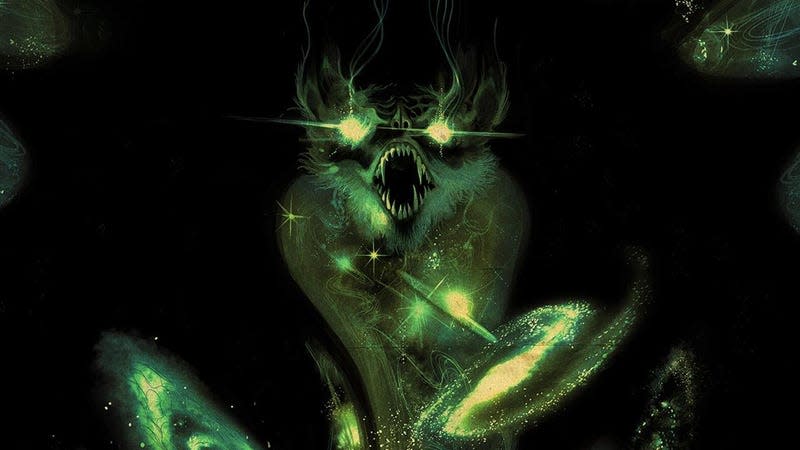
The universe is a spooky place, filled with zombie stars, invisible matter, and monster galaxies lurking in the silent darkness of the cosmos.
In order to pay tribute to the weird mysteries that surround us, NASA’s Exoplanet Exploration Program Office produced a set of illustrations meant to look like vintage horror movie posters. All draw inspiration from real cosmic phenomenon like dark matter, gamma ray bursts and exoplanets with hellish conditions.
Read more
“One of the things I really like about these posters is that if you spend some time studying the art and then maybe go learn a little more about each of these topics, you’ll see there was a lot of thought by the artists about the choices they made to highlight the science,” Jason Rhodes, an astrophysicist at NASA’s Jet Propulsion Lab, who consulted on the project, said in a NASA release from 2020.
Read on for such cinematic classics as Dark Matter: Something Else Is Out There and Gamma Ray Ghouls.
The Roasted Planet
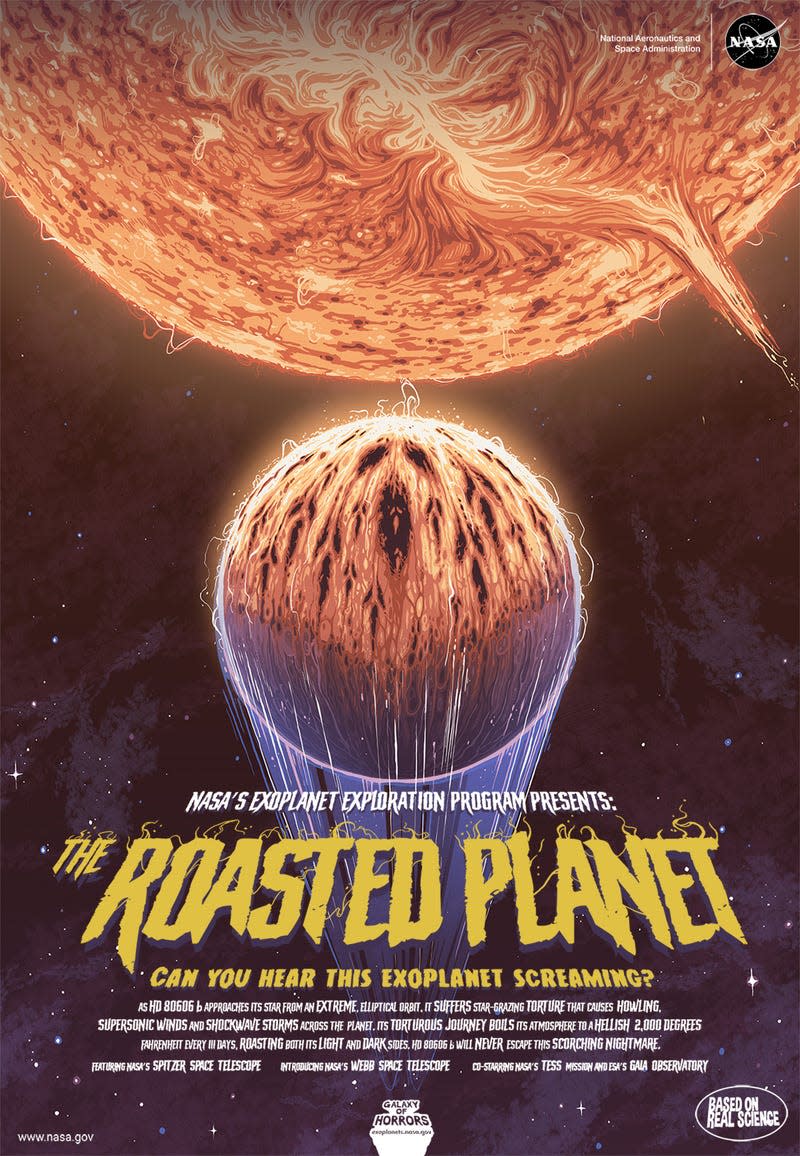
If you’re traveling through the universe, you do not want to end up at planet HD 80606 b. The gas giant exoplanet is more than four times as massive as Jupiter and takes only four days to complete an orbit around its star.
Temperatures on this massive planet can reach up to 2,000 Fahrenheit (1,093 Celsius) in the six hours it spends closest to its star, according to NASA. As it approaches, the planet is cooked by supersonic winds and shockwave storms.
Dark Energy
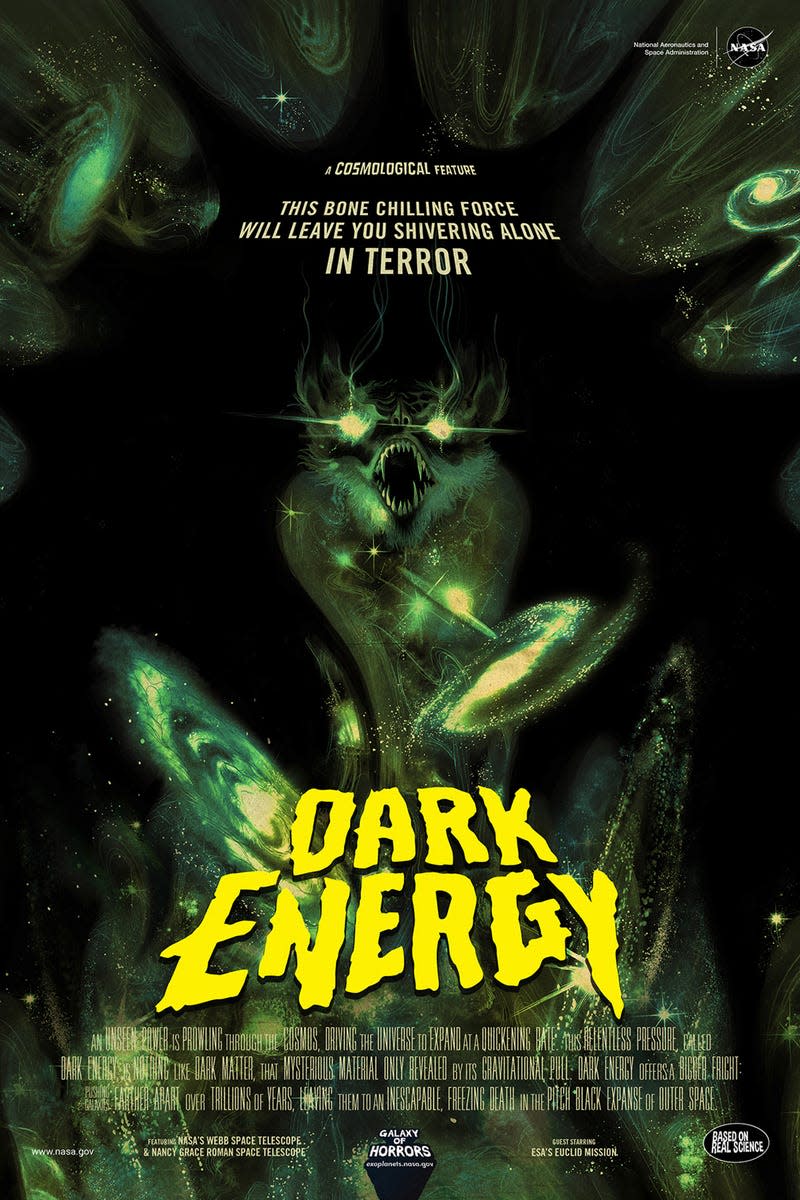
Our universe is expanding at an accelerating rate, and the culprit seems to be the ever elusive dark energy.
Dark energy is sort of the flip-side of gravity. Instead of holding objects together, dark energy hypothetically pushes galaxies apart over trillions of years. The gravitational pull of dark energy may tear the universe apart, condemning all its contents to a cold, lonely death.
Devoured by Gravity
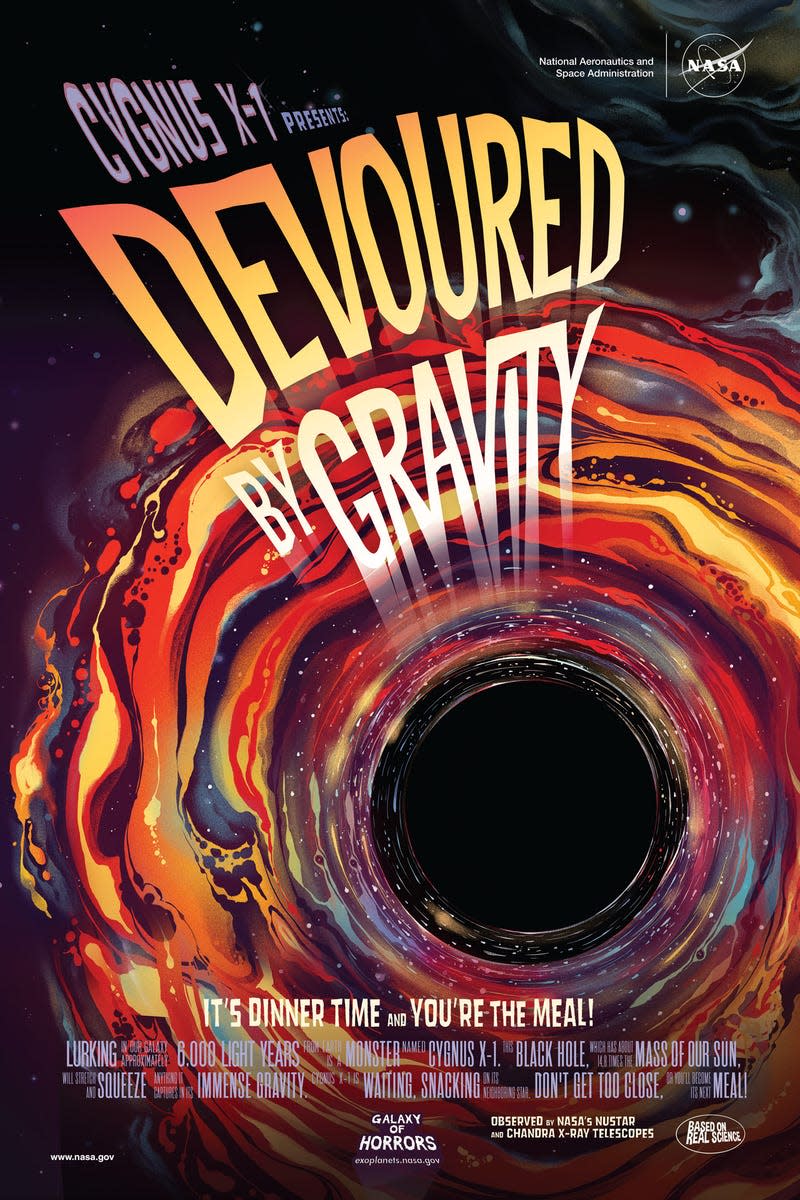
“Don’t get too close, or you’ll become its next meal!” NASA warns of a black hole that lurks in the shadows of our galaxy. Cygnus X-1 lies just 6,000 light-years from Earth and is about 15 times more massive than the Sun.
This broody monster chows down on neighboring stars, growing bigger and bigger with each stellar meal.
Galactic Graveyard
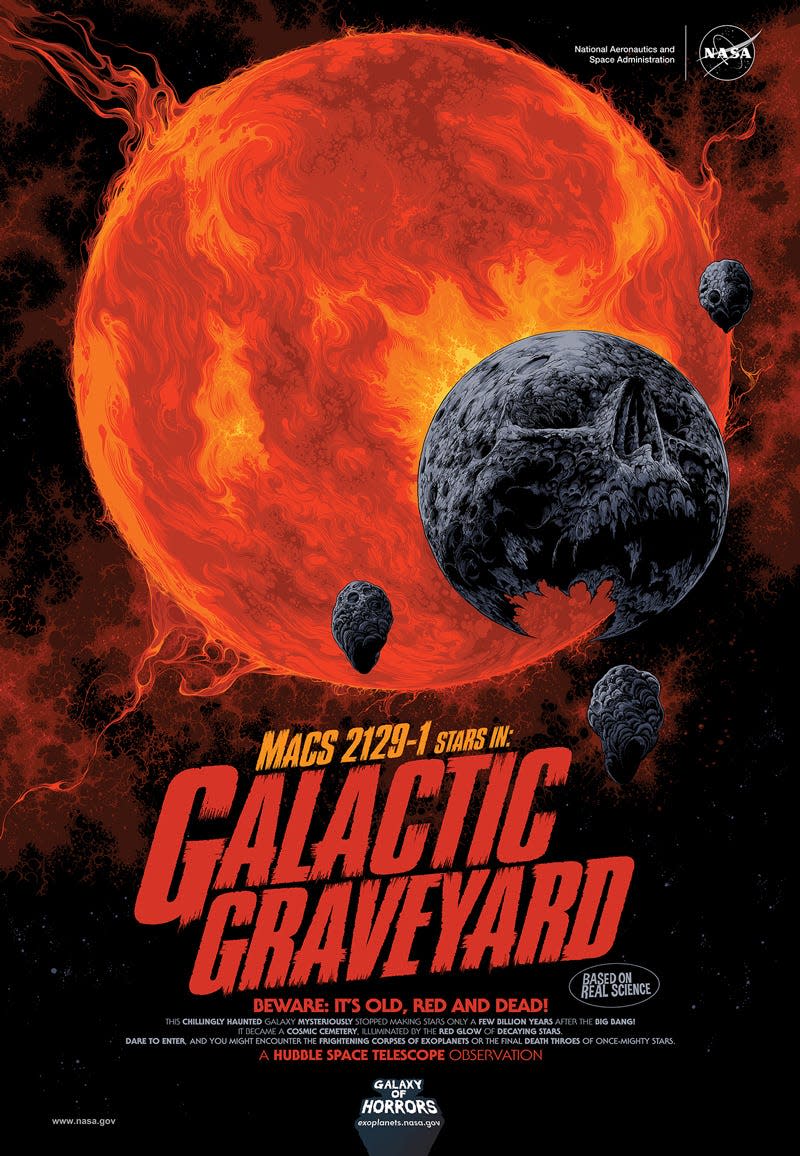
About 10 billion light-years away from Earth, a galaxy has been pronounced dead.
A few billion years after the Big Bang, galaxy MACS 2129-1 mysteriously stopped birthing stars. Instead, the galaxy became a graveyard for stellar corpses and the decaying shells of exoplanets long gone.
Dark Matter
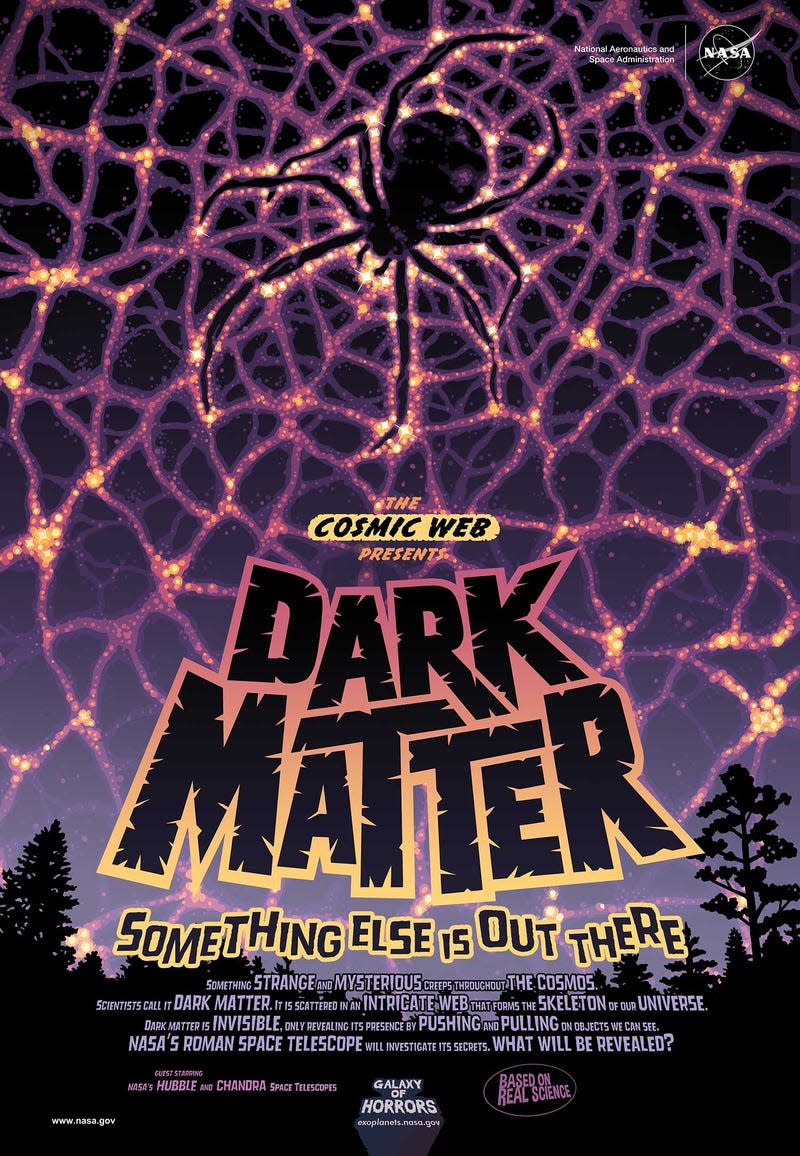
Although we can’t see it, dark matter is believed to make up the vast majority of the matter in the universe.
Dark matter’s chilling presence can only be inferred through the force it exerts on celestial objects. Similar to the spider web depicted in the poster, dark matter forms a cosmic web that connects clusters of galaxies through thin filaments.
Gamma Ray Ghouls
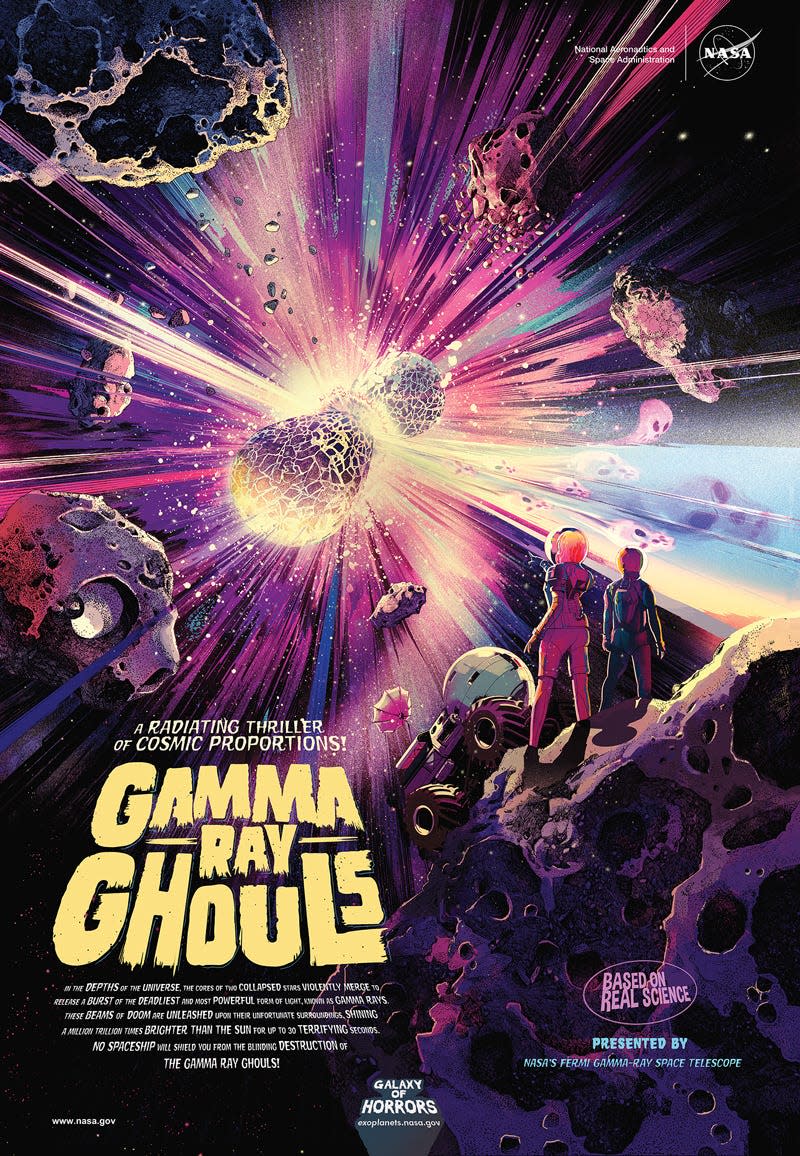
When the cores of two giant stars collide, they produce a violent, shrieking burst of light known as a gamma ray burst.
Gamma ray bursts are the most powerful form of light, and they shine a million times brighter than the Sun for a brief, 30-second window of existence. The two energy beams depicted in the poster reveal how the gamma ray bursts take place in real life, traveling in opposite directions from the colliding stellar corpses, according to NASA.
Flares of Fury
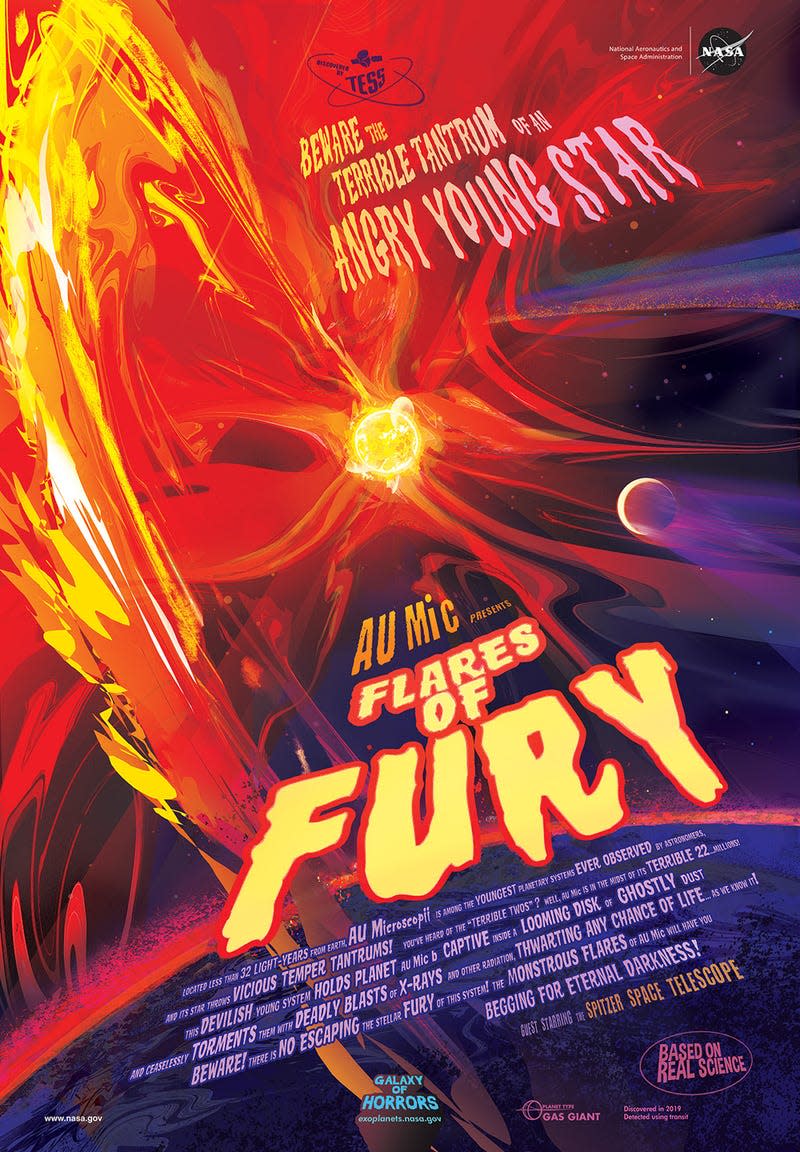
AU Microscopii is a young, hot-headed star that throws temper tantrums in the form of violent flares.
This temperamental star is located less than 32 light-years from Earth, but it is nothing like our Sun. The young star sends out deadly blasts of radiation towards its planet AU Mic b, destroying its chances of ever hosting life.
Zombie Worlds
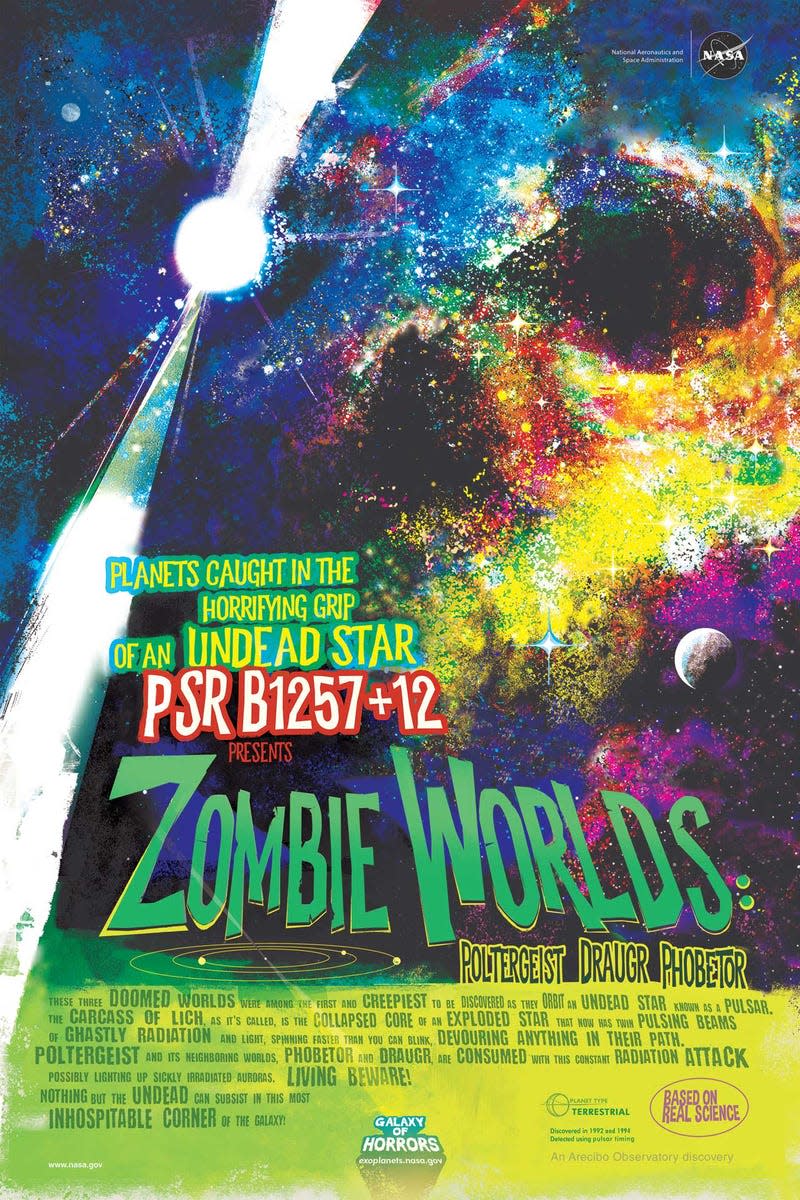
Although they were among the first exoplanets to be discovered, these alien worlds were doomed from the start.
Psr b1257+12 is a zombie star system, with two planets orbiting a pulsar. A pulsar is a fast rotating dead star, or neutron star, which is the super-dense remains of a star that collapsed in a supernova. These stars emit beams of radiation that render nearby planet uninhabitable.
Rains of Terror
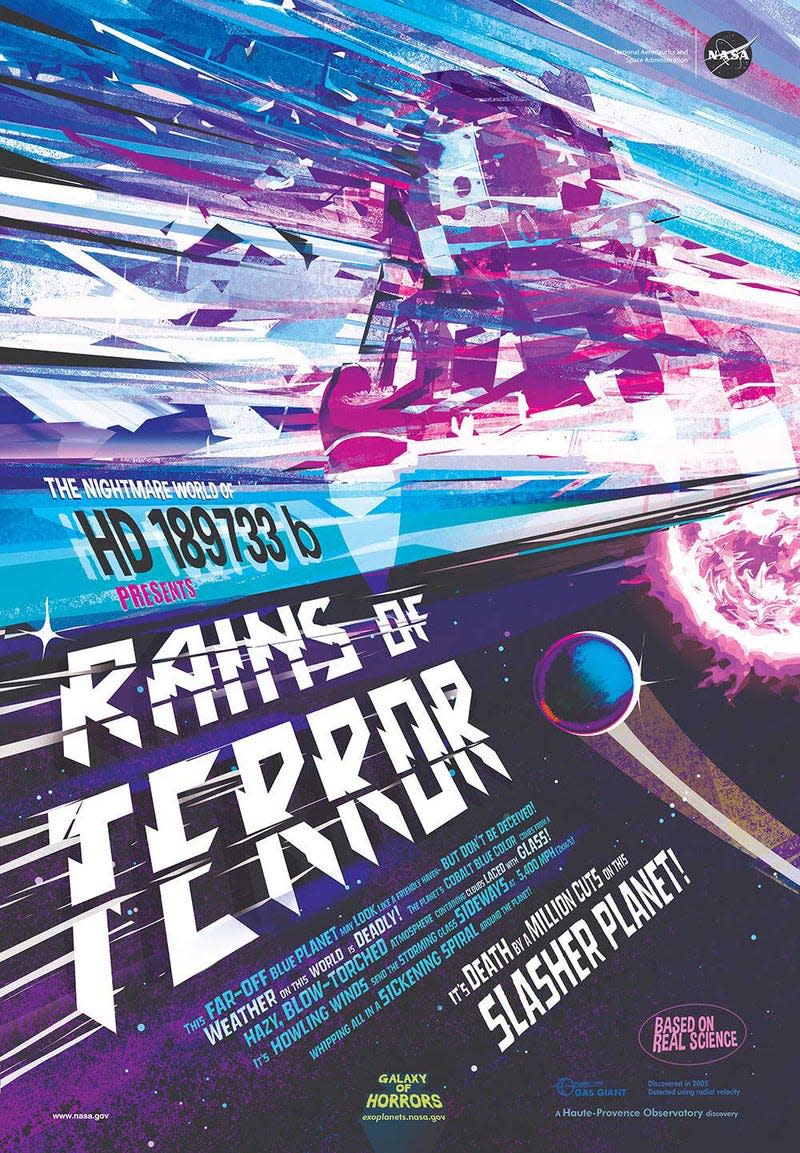
If you think a rainy day is a bummer on Earth, just wait till you visit planet HD 189733 b, where it rains glass.
This blue-tinted planet has clouds laced with glass, and its winds cause the glass to rain down at speeds of 5,400 miles per hour (2 kilometers per second) in a sideways spiral. I would not recommend visiting this world, no matter how strong your umbrella.
More from Gizmodo
Sign up for Gizmodo's Newsletter. For the latest news, Facebook, Twitter and Instagram.

